
Unlocking 3D Potential with 2D to 3D AI Arxiv
The world of digital content is changing fast. New 2D to 3D AI tech is leading the way. The 2D to 3D AI Arxiv shows a big push for 3D content.
Generative AI has made big strides in images and videos. Now, turning 2D images into 3D models is key. This article explores the latest research and challenges in AI for 3D models.
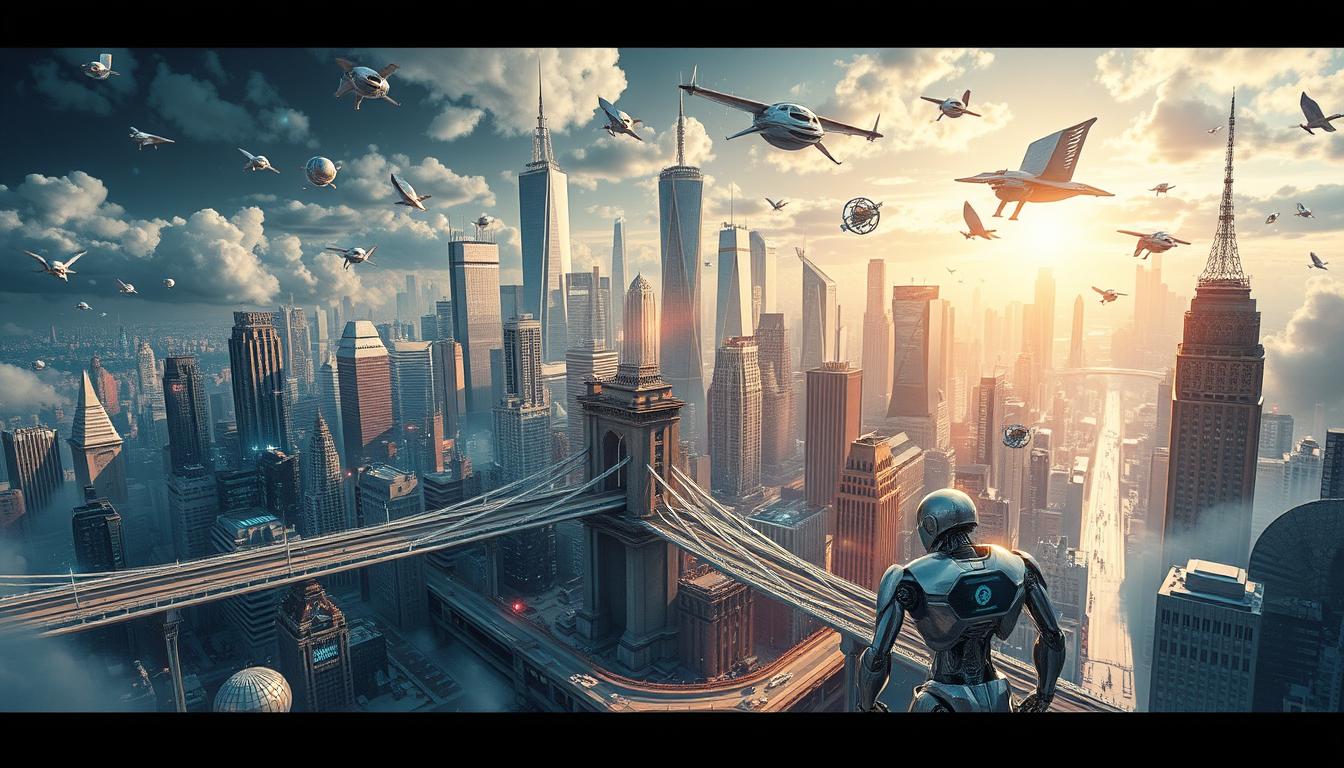
Key Takeaways
- Research interest in 2D to 3D AI has surged over the past decade.
- Generative AI methods such as 3D-GAN and NeRFs play pivotal roles in model creation.
- The demand for immersive experiences, specially in the metaverse, drives the relevance of 3D generation.
- Challenges in integrating 3D representations into existing 2D models require innovative solutions.
- UniVLG has set new performance standards in 3D vision-language tasks without relying on 3D mesh reconstruction.
Introduction to 2D to 3D AI Technologies
The move from 2D to 3D content has been big thanks to AI. Now, everyone can use deep learning and computer graphics to make detailed 3D models. The field of text-to-3D is growing fast, but finding enough training data is hard.
Generative AI is changing how we make content, with text leading the way. Neural Radiance Fields (NeRF) are a big step forward. They use neural networks to make high-quality 3D shapes, making 2D to 3D easier.
There are two main types of 3D data: structured and non-structured. Structured data, like voxel grids, takes up a lot of space. On the other hand, point clouds from depth sensors are used in many fields. They help with modeling and tracking.
Click to Watch Video Tutorial.
Neural fields can show scenes or objects in 3D. They make high-quality images possible even on simple devices. This makes creating 3D content easier, thanks to AI.
The Importance of 3D Content Generation
The rise of immersive experiences in gaming and entertainment has led to a big demand for 3D assets. High-quality 3D content makes interactions in the digital world better. It's a big change from old 2D pictures.
Tools like Make-Your-3D make creating 3D content fast. It can make 3D models from one picture in just five minutes. This is much faster than old methods.
As the metaverse grows, knowing about space and depth is key. New tech combines old methods to make better 3D assets. This makes experiences more real and fun for users.
Creating sharp 3D shapes is now easier thanks to new tech. A study by MIT shows these new methods work as well as old ones. They don't need long training or extra work.
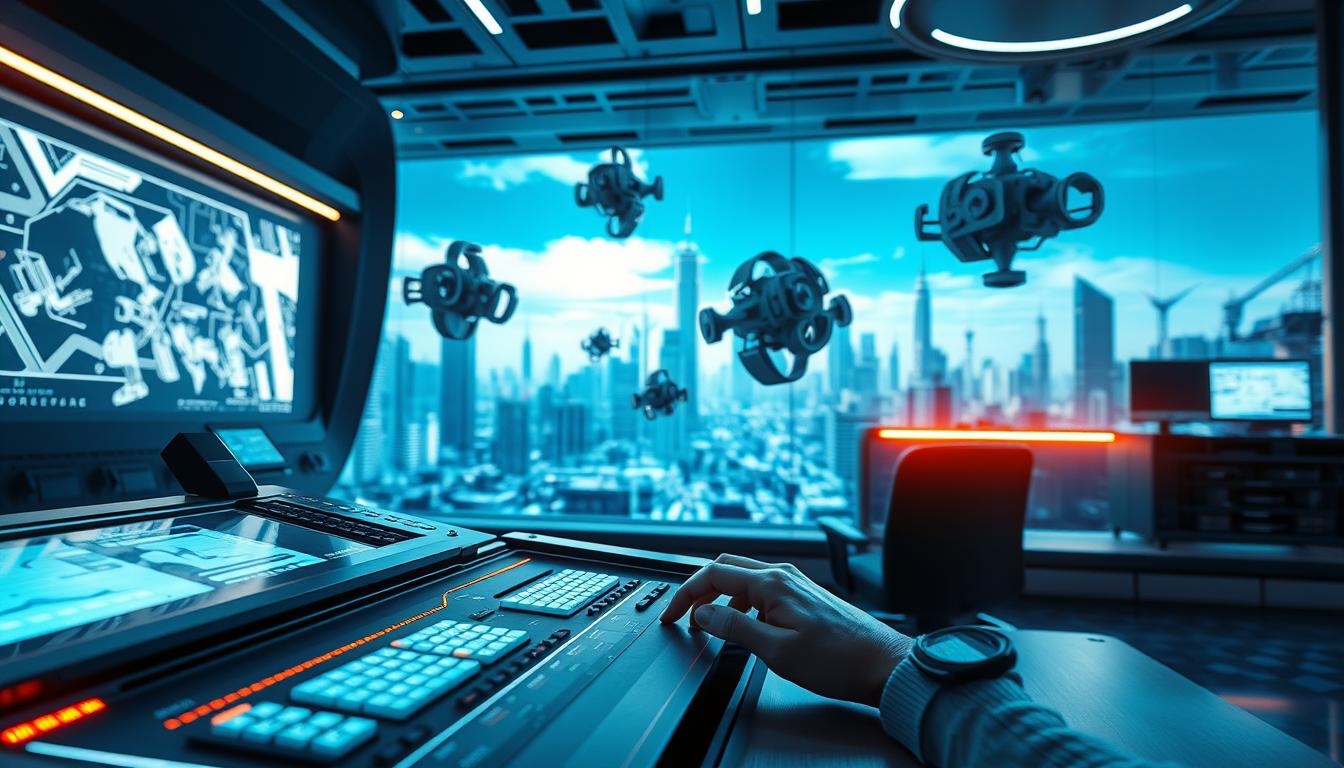
Researchers are working with big datasets for 3D generation. They use ShapeNet and Objaverse. With over 10 million examples, they aim to make 3D assets even better. The future of 3D content looks bright with new and exciting ways to create.
Understanding AI in 3D Generation
The world of AI in 3D content generation is changing fast. It's all about turning 2D images into 3D ones. New machine learning models and neural networks make this easier.
Techniques like PointNet help a lot. It uses special features to make sure 3D models are right. PointNet++ makes these models even better by catching more details.
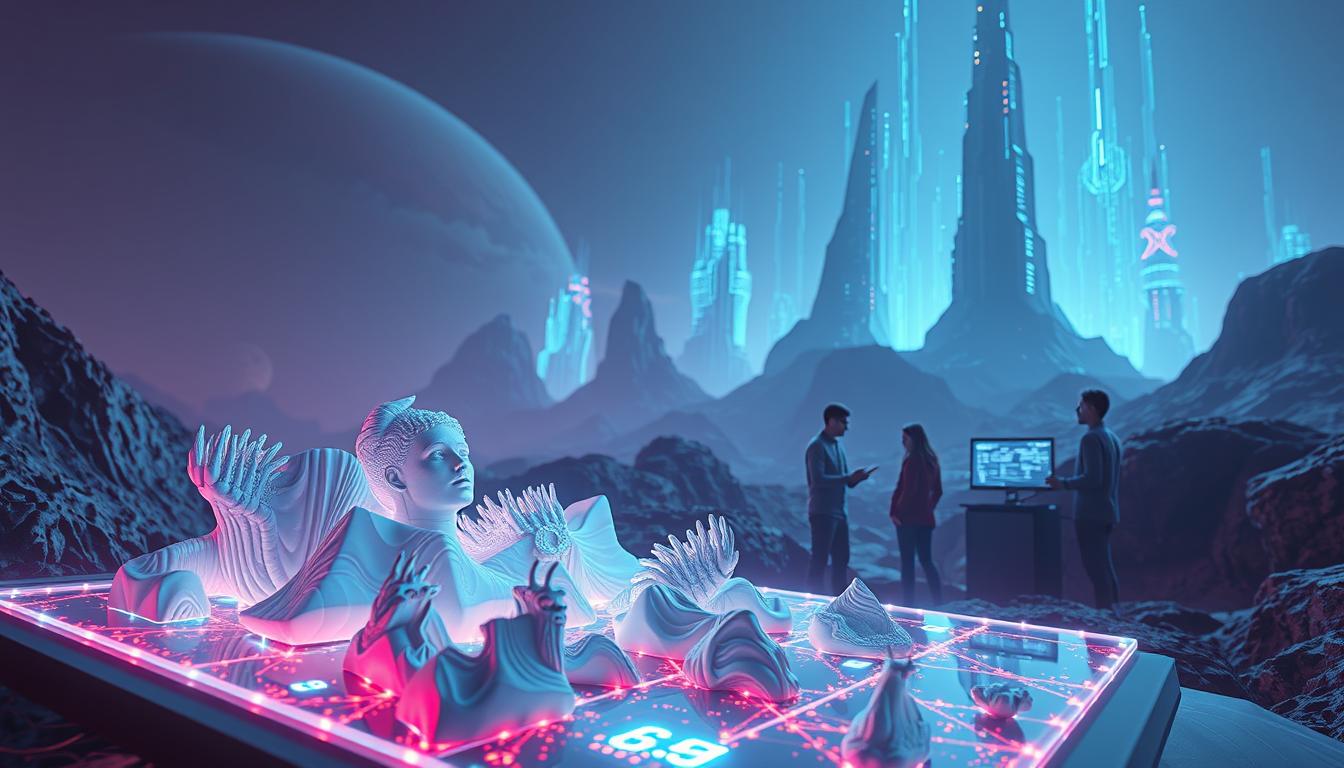
Now, we're seeing new ways to mix old methods. This makes 3D models faster and better. For example, projecting 3D shapes into 2D images from different angles is getting easier.
Lightweight networks are becoming popular. They work well on phones and other devices with less power. New tools like ShellConv and ShellNet are making these models better for real-world use.
Text-guided AI editing tools are also exciting. They make creating 3D content faster and easier. But, there's still a lot to learn in this area.
To learn more, check out the Unlocking 3D Potential with 2D to 3D paper. It explores new methods and the future of 3D generation.
2D to 3D AI Arxiv: Overview of Key Research
The world of 2D to 3D AI research is changing fast. Arxiv research shows new studies leading the way. These studies mix 2D models with 3D shapes, making things look better and more real.
One key study is GeoDream. It uses smart methods to make 3D images from 2D ones. This makes 3D images look more real.
Uni3D is another big name in 3D AI. It makes 3D images fast and well. It does great on many tests.
BridgeQA is also a top performer. It beats old records by a lot on tests like ScanQA and SQA. This shows how fast 3D AI is getting better.
But, there's not enough data for 3D AI. We have less than 1200 scenes for 3D, compared to 2D. This makes us find new ways to make more data and better methods.
Studies show we use about 800 indoor scenes in 3D-VQA. This shows how important it is to have more data.
These AI advances are key for 3D tech's future. They help us make 3D images better and faster. For more info, check out this Arxiv link.
| Study | Focus Area | Key Achievement |
|---|---|---|
| GeoDream | Integration of 2D diffusion with 3D structures | Enhanced spatial consistency |
| Uni3D | Scalable representations for 3D tasks | Improved performance across benchmarks |
| BridgeQA | 3D Visual Question Answering | Surpassed previous benchmarks by 4.3% and 4.4% |
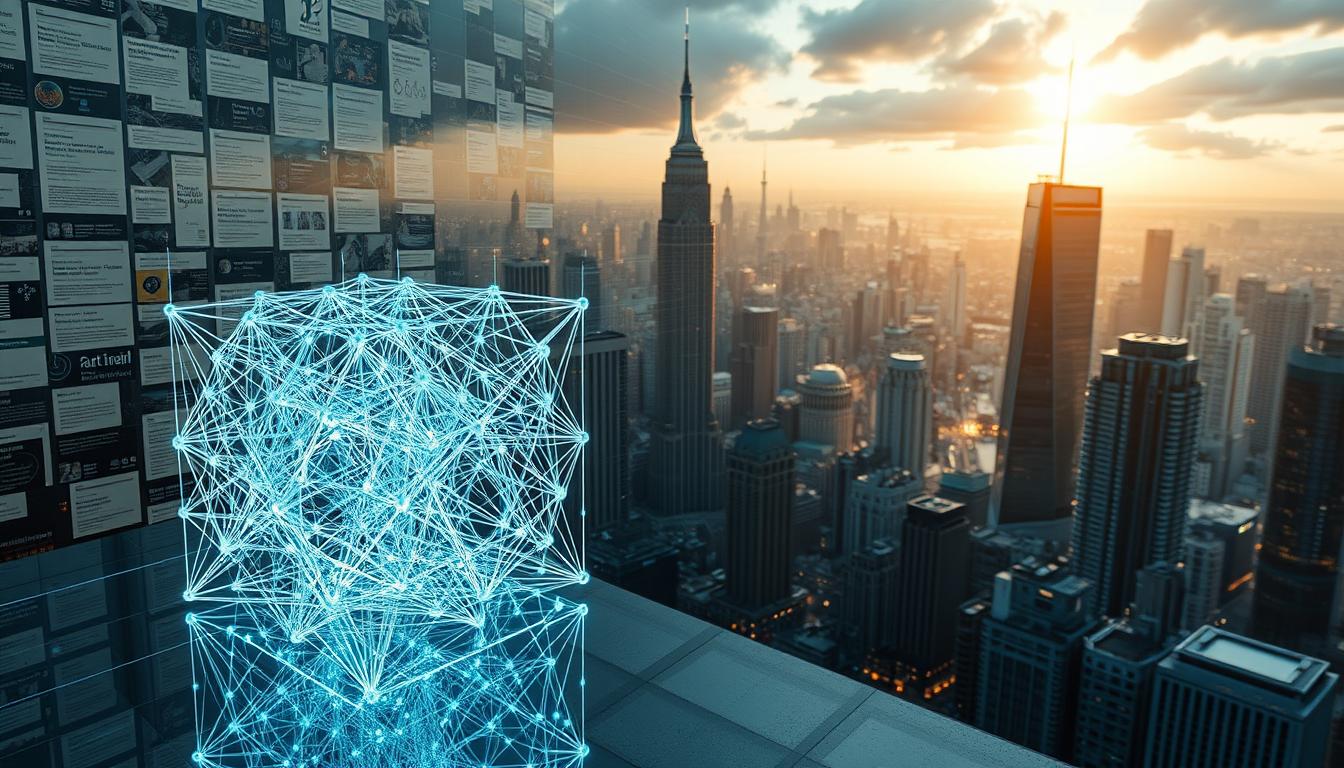
Generative AI and Its Role in 3D Model Creation
Generative AI is key in making 3D models from 2D images. It uses new tech like neural fields and diffusion models. These help make better and faster 3D content.
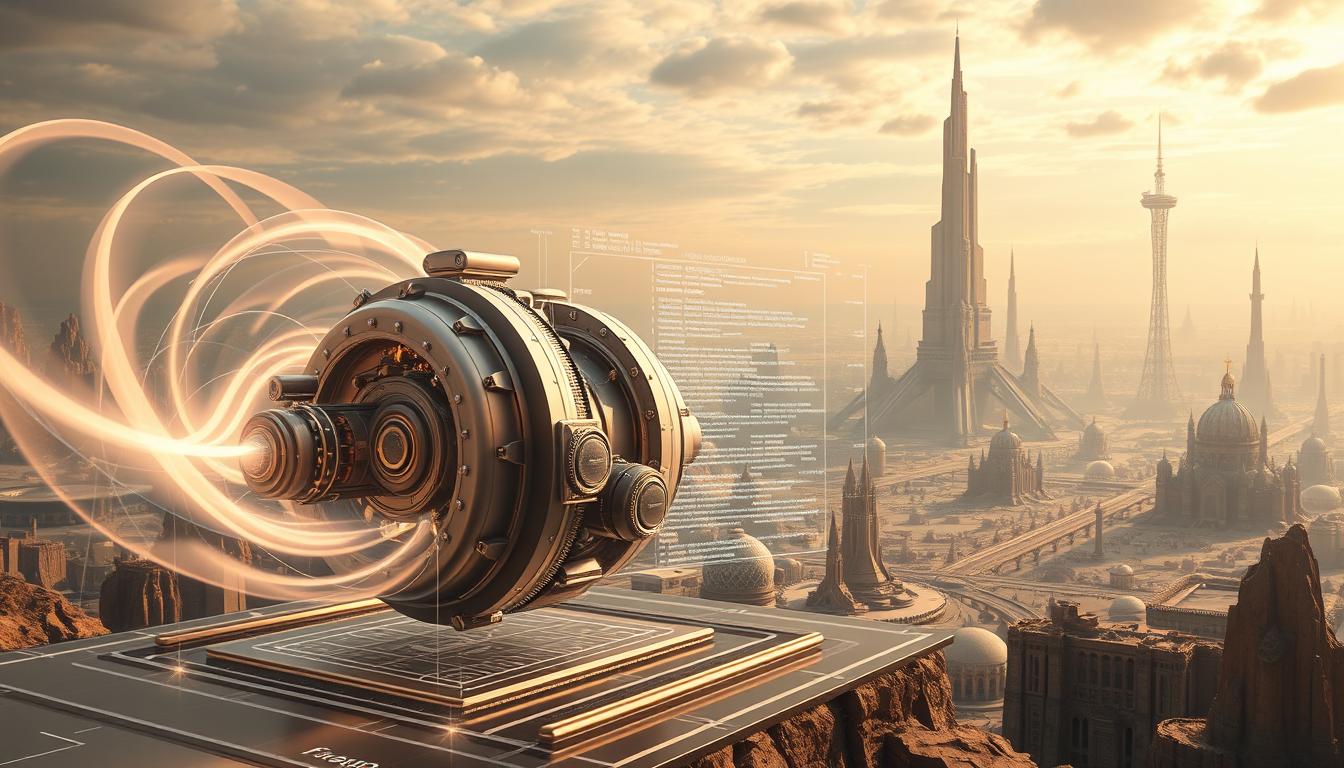
Models like NeRF change how we make 3D models. They move away from old methods that take up a lot of space. Point clouds are also getting popular in fields like architecture because they can show 3D data well.
Generative AI makes 3D models better by solving problems like making sure they look the same from different views. The Phidias model uses new ways to make 3D models better and more controlled. It helps solve big issues in 3D modeling.
- Avatar generation
- Texture generation
- Shape editing
- Scene generation
The need for top-notch 3D models is growing. This shows how much people want generative AI. These advancements make 3D models better and open up new areas like the metaverse.
Even with the challenges, generative AI keeps getting better. It's changing how we make 3D models. It's a big part of the future of 3D content.
Challenges in Transitioning from 2D to 3D
Going from 2D to 3D is tough. It needs careful steps to succeed. One big challenge in 3D generation is relying too much on old 3D modelers. This slows things down and makes it hard for new people to join.
Another problem is making 3D content. It needs special data that's hard to find. This makes it hard to be creative and use computers efficiently.
There's a growing need for better 3D stuff. Pre-trained models might help a lot. They can learn from huge amounts of 2D data, making things easier. But, figuring out how to handle 3D data like meshes and point clouds is still a big task.
To show these challenges and possible fixes, here's a table:
| Challenge | Description | Potential Solution |
|---|---|---|
| Data Scarcity | Limited availability of large, annotated datasets for 3D tasks. | Utilizing diffusion models trained on expansive 2D datasets. |
| Computational Demand | High resource requirements for training 3D models. | Implementing pre-trained models to lessen the resource burden. |
| Complexity of 3D Representation | Challenges in accurately modeling meshes and point clouds. | Innovating methods to simplify 3D data visualization. |
| Efficiency Issues | Long training times and difficulties in scalability with traditional methods. | Adopting efficient approaches like 3D Gaussian Splatting. |
Core Methodologies in 3D Generation
The world of 3D generation is filled with many techniques and tools. These help make scenes look better. There are two main types: explicit and implicit representations.
Explicit methods, like point clouds and meshes, show clear shapes and details. Implicit methods use math to define surfaces. Each method has its own role in creating content.
Direct generation in text-to-3D tech makes simple 3D models. But, it can be expensive to train. On the other hand, optimization-based methods can create more complex scenes. The GE3D framework is a great example, using multi-step editing to avoid common problems.
Layout-Your-3D is another method that's fast, taking just 12 minutes per prompt. It uses a two-step process to improve 3D models. It also checks for collisions to make scenes look better.
Diffusion models, combined with 3D Gaussian Splatting and NeRF, make scenes look very real. The field of 3D generation is always getting better. It tackles problems like not enough data and slow computers. It's now used in games and virtual reality too.
| Generation Method | Characteristics | Strengths | Weaknesses |
|---|---|---|---|
| Direct Generation | Simple 3D structures | Quick initial output | High training costs |
| Optimization-Based | Higher quality 3D models | More diverse representations | Longer optimization times |
| GE3D | Multi-step editing technique | Improves output quality | Complexity in implementation |
| Layout-Your-3D | Efficient generation process | Quick and high-quality output | May require detailed training data |
Datasets Used for 3D Generation Research
Good datasets for 3D research are key for making 3D models work well. The quality and variety of these datasets help machine learning do better. The 3D-GRAND dataset is a big help, with 40,087 scenes and 6.2 million instructions.
This dataset helps models tell if objects are really there in 3D spaces. It's a big deal for making 3D environments and objects look real.
Better datasets mean better results. For example, the 3D-GRAND dataset cuts down on mistakes in 3D models. It makes them more accurate.
Using new tools like GPT-4 makes things cheaper and faster. Before, it cost a lot of money and time to annotate data. Now, it's much cheaper and quicker.
Other important datasets include ShapeNet and Objaverse. ShapeNet has 51,300 3D models, and Objaverse has over 800,000. But, some categories in Objaverse are hard to identify.
UniG3D is also key, with ten views of each 3D model. This helps models learn to see things in new ways.
The table below shows how different datasets compare:
| Dataset | 3D Models Count | Scenes Count | Language Instructions | Annotation Method |
|---|---|---|---|---|
| 3D-GRAND | N/A | 40,087 | 6.2 million | LLM Annotation |
| ShapeNet | 51,300 | N/A | N/A | Human Annotation |
| Objaverse | 800,000+ | N/A | N/A | Mixed Annotation |
| UniG3D | N/A | N/A | N/A | Mixed Annotation |
More and better datasets mean better 3D models. The work on these datasets will keep improving 3D generation research.
Applications of 3D Technology in Various Industries
3D technology has changed many industries. It brings new solutions and better experiences. In gaming, it makes games more real and fun.
The film world also benefits a lot. 3D makes stories come alive. It helps directors tell stories in a new way.
In architecture, 3D makes presentations better. Architects use it for virtual tours and detailed designs. This helps clients understand projects better.
In medicine, 3D technology is very important. It helps in imaging and planning surgeries. Doctors use it to plan treatments and improve results.
These changes open up new possibilities. More people will need to learn about 3D technology. It will change many areas, making things more interesting and interactive.
Future Trends in 2D to 3D AI Research
Looking ahead, 2D to 3D AI research will see big changes. New technologies will change how we make 3D content. Researchers are working on making 3D models better and faster.
Big Vision-Language Models like BLIP-2 and Tag2Text will help. They will make 3D models match better with images and text. This will make turning 2D images into 3D models easier.
We need more 3D data to keep improving. Projects are working to make more 3D data. This will help new technologies work better in many areas.
Models like ULIP and OpenShape are getting better at 3D. They use special learning methods to link 3D objects with text. This shows how we can make 3D models better.
We expect to see better 3D learning soon. This will make models easier to understand. New technologies will make 2D to 3D AI faster and better, leading to more innovation.
Conclusion
2D to 3D AI technologies have made big steps forward. They promise a lot for many areas. The findings show we can make 3D models from just a few hundred images.
This is a big win for making things more efficient. It also means we can keep the look of 2D images even after training is short. This is a big step in making 3D content better.
This research is very important. It makes complex problems easier to solve. This helps in fields like gaming and design.
Old ways take a lot of time and money. But new 3D making methods can save a lot. This changes how projects are done and what they look like.
Also, turning bad 2D medical images into good 3D ones is very promising. This is key for medical work where being exact is crucial. As these methods get better, we'll see even more amazing uses in many areas.
FAQ
What is the primary objective of transforming 2D images into 3D models?
The main goal is to make user experiences better in fields like gaming and virtual reality. We aim to create 3D models that feel real and immersive from 2D images.
How do generative AI technologies contribute to 3D content creation?
Generative AI, like neural networks and GANs, is key in making high-quality 3D models. It helps in creating diverse and detailed 3D content, pushing the limits of what's possible.
What challenges arise during the transition from 2D to 3D?
Challenges include the lack of detailed 3D asset datasets. It's also hard to judge the quality of 3D models and ensure they look the same from all angles.
What are some examples of significant research in the 2D to 3D AI field?
Important research includes GeoDream and Uni3D. GeoDream uses 2D models with 3D structures. Uni3D is a model that makes 3D tasks easier and more scalable.
Why are robust datasets essential for successful 3D generation models?
Good datasets are crucial for training 3D models. They help in making accurate and lifelike 3D assets, like people and faces.
How is 3D technology utilized in different industries?
3D tech is used in gaming for interactive fun, in movies for better stories, and in architecture for clearer designs. It makes things more engaging for users.
What future trends are expected in the 2D to 3D AI research landscape?
We might see better AI that's more scalable and efficient. This could lead to even more advanced 3D content creation and wider uses in industries.